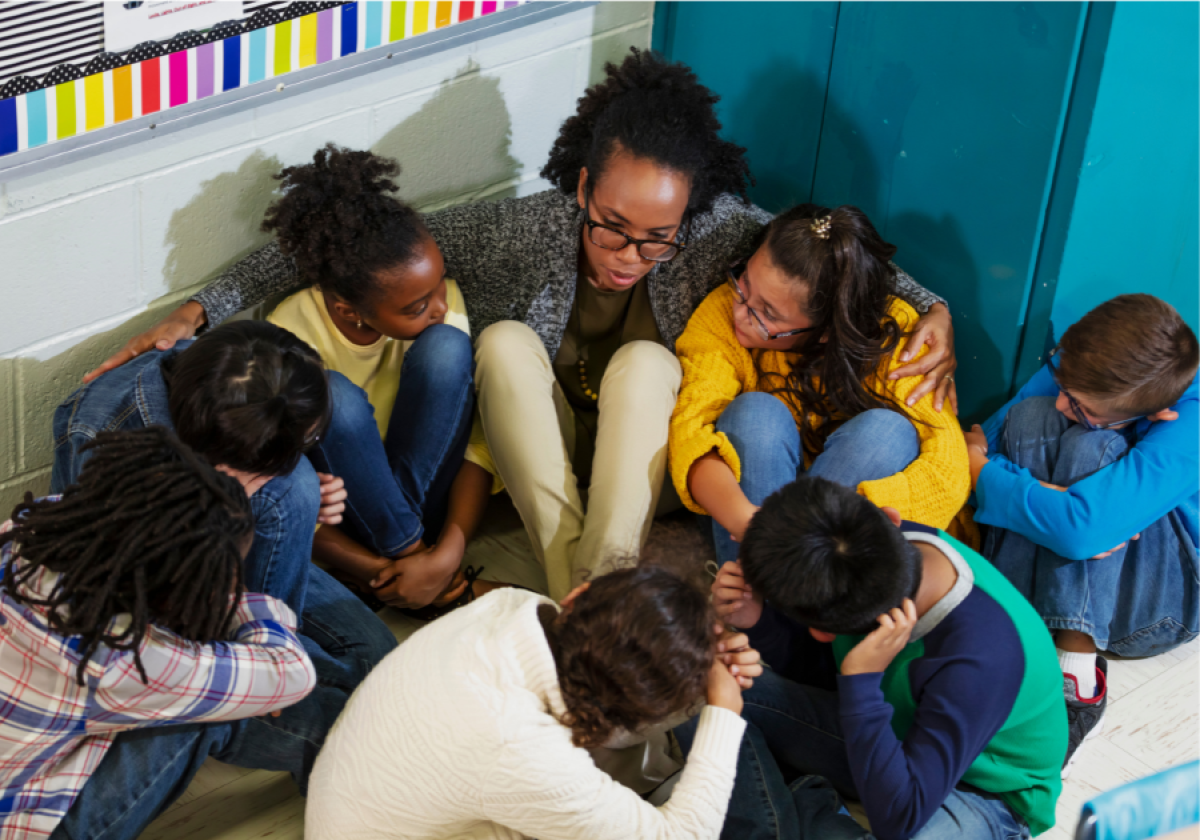I’m sitting on the floor in a second-grade classroom, my back pressed against the wall and my knees drawn up to my chest. On both sides of me, 20 kids and their teacher are posed exactly the same. Some stare at their feet. Some are whimpering. The little girl next to me has buried her face in her shirt collar. My daughter is in the line somewhere. At the end of the room, two kids quietly snicker to each other.
This is a lockdown drill. Most American kids go through one of these at least once a year. I was volunteering at school that day, and it was my first.
Everything about it was wrong.
First, eight-year-olds are never this quiet. But these kids have learned that it’s very, very important for them to stay quiet and out of sight of the door. There’s nothing more important than that. They hear the lesson from their teacher, their principal, the video they watch to prepare, and the friendly police officer who comes in after it’s over: “locks, lights, out of sight.”
After a few minutes, the teacher asks me to reach into the orange five-gallon bucket from Home Depot. This is the room’s lockdown bucket. It has a few supplies, and it can be used as a toilet, in a pinch. Not today, though. She asks me to pull out the bag of lollipops and pass them down the line.
So here I am, looking at these quiet second graders sucking on their cherry or root beer flavored Dum-Dums like pacifiers, fighting back tears of shame as I see how deeply my fellow adults and I have failed this generation.
After 18 minutes, a police officer opens the door. She tells the kids they did a great job. If it was a real emergency, they would all be OK because they did locks, lights, out of sight. The heavy, locked door would protect them.
This was an easy one, the teacher tells me. Some of the drills last an hour. One day, the system was glitching and the lockdown alarm went off a dozen times.
After the all-clear goes out, the teacher pulls up a kids’ dance video from YouTube, and we try to shake and shimmy the experience out of our minds.
Every adult in America should sit through a school lockdown drill. It might give us a common understanding of the real consequences of our country’s epidemic of firearm violence. A shared understanding can help us find ways to bring the violence to an end.
Because right now, we are using lots of words without having real conversations. Meanwhile, our schoolchildren are traumatized by lockdown drills, and thousands of Coloradans continue to be injured and die from firearms.
Nearly 5,300 Coloradans lost their lives to firearms between 2016 and 2021, according to the Colorado Department of Public Health & Environment (CDPHE). Nearly three-quarters of these were deaths by suicide, while almost all the rest were assaults or homicide.
Whether you live in one of the four in 10 gun-owning households in Colorado or not, we can all agree that this death toll is not OK.
And that’s a start. Once we find the points we can agree on, we can start working toward change.
As a public health institute, CHI uses data and evidence to inform our analyses. As a group of humans, we care about our families and the people in our communities. This is the head and the heart of our work.
Policy change requires an alignment of the head and the heart. Colorado has indeed passed important firearm safety laws in the past few years, but does anyone believe they alone will slow or stop firearm violence? We need more than a policy response.
If we want to reduce firearm deaths, we need to stop talking about firearms — and start talking to each other.
We have been helping start these conversations at CHI. In June, we participated in a Public Health Roundtable on Firearm-Related Violence Prevention. A report on that work is out today from Trailhead Institute.
On October 19, we invited Trailhead Institute and CDPHE to a discussion at our monthly webinar, where we discussed the role public health should play in curbing firearms-related violence. Watch the video.
We’ve been talking about this at CHI, and we know we can provide a lot, including:
- Clear communications
- Subject matter expertise and data
- A forum for engagement and dialogue
- An openness to all perspectives
- Help to build the capacity of local groups to address the issue in their own ways
Personally, I’m grateful that CHI and our public health partners are engaging in this issue. One day soon, I hope to be able to look my kids in the eye and tell them I’m doing my very best to keep them safe.


